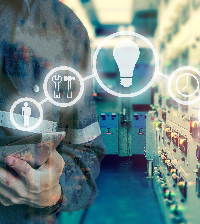Solution: Reduction of methane emissions
Solution: Reduction of methane emissions
Reduction of methane emissions
In which region do you need this solution?
Reduction of methane emissions
Background
Reducing methane emissions is relevant to mitigating climate change. the energy sector accounts for 19% of methane emissions in the EU. In Austria, this share is around 9 %.
(Source: Factsheet ÖVGW April 2022; Methane emissions in Austria by polluter, 2018, Federal Environment Agency)
Main topics
The European Regulation (EU) 2024/1787 on the reduction of methane emissions from the energy sector contains provisions for the accurate measurement, quantification, monitoring, reporting and verification of methane emissions.
The energy sectorsaddressed are oil, gas and coal.
Measures to reduce methane emissions include leak detection and repair studies, repair obligations (LDAR) and restrictions on blowing and flaring.
This regulation also contains provisions on instruments to ensure transparency in connection with methane emissions. This should also ensure the necessary data quality when importing energy into Europe.
Operators of plants in the oil, gas and coal energy sectors
must submit a report to the competent authorities – in stages – with the following contents:
- Quantification of estimated methane emissions at source based on at least generic emission factors
- Quantification of directly measured methane emissions at source
- Quantification of directly measured methane emissions at source, supplemented by measurements at site level
The report shall also include inactive boreholes, temporarily backfilled boreholes and permanently backfilled and abandoned boreholes.
Active underground coal mines and surface coal mines as well as closed or abandoned underground coal mines must also be recorded.
Authorities
must carry out regular inspections to check that operators are complying with the requirements set out in this Regulation.
Services of TÜV AUSTRIA
- Evaluation of leak detection and repair programs (LDAR – Leak Detection and Repair)
- Verification of the report to be submitted to the authority
- Evaluation of the derived measures
- Technical measures (e.g. explosion protection)
- Measures to protect against environmental impacts
- Measures for the protection of persons (employee protection)
- Certification of testing and inspection procedures
- Training courses & in-house training
- Support of the authorities by non-official experts
















